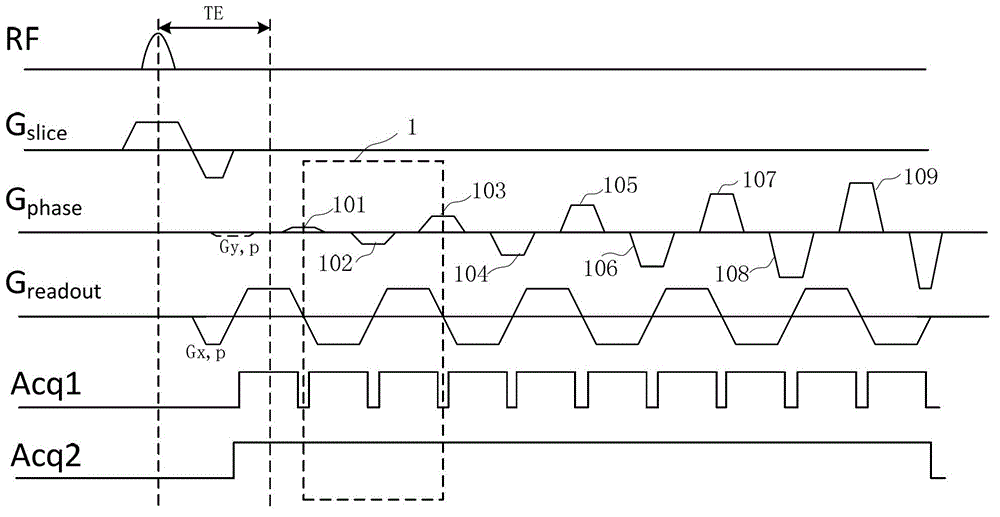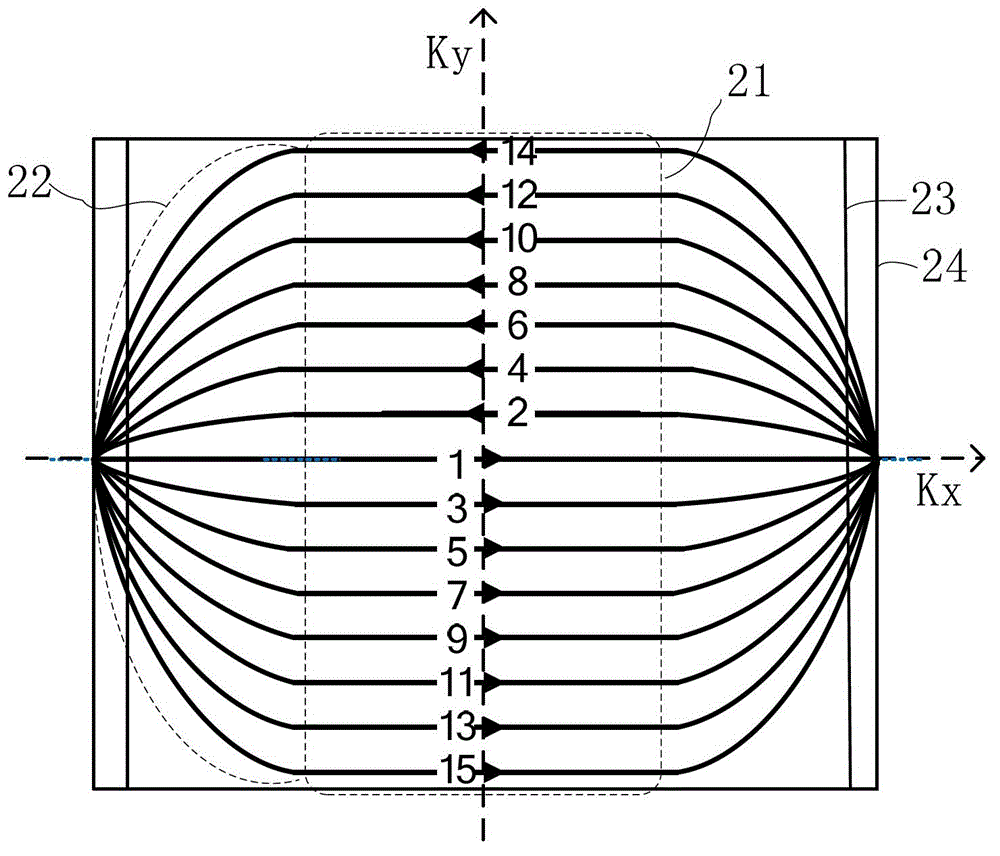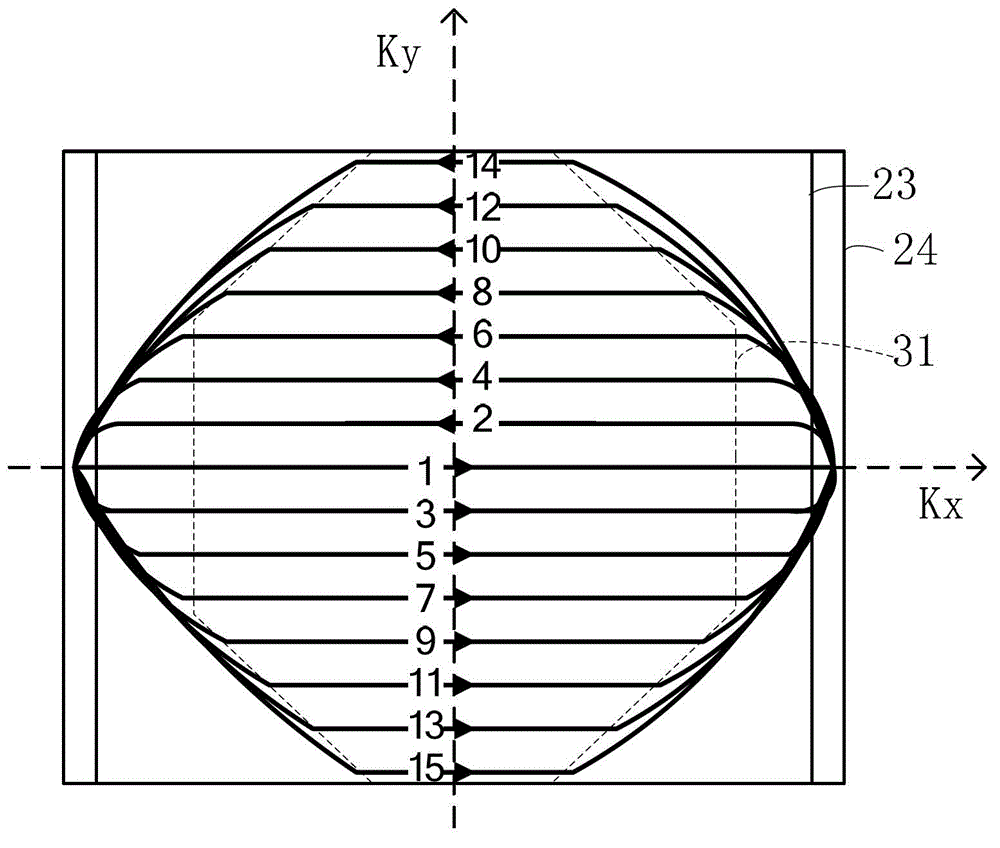An inside-out echo-planar imaging method for shortening echo time
A technology of planar echo imaging and echo time, which is applied in the fields of application, medical science, and measuring devices, etc. It can solve the problems of increased acquisition time, motion sensitivity, short echo time, etc., achieve shortened echo time, and improve image quality , the effect of small attenuation
- Summary
- Abstract
- Description
- Claims
- Application Information
AI Technical Summary
Problems solved by technology
Method used
Image
Examples
Embodiment Construction
[0026] like Figure 7 As shown, the present invention is used to shorten the echo time echo plane imaging method from inside to outside comprising the following steps:
[0027] 1. Inside-out echo-planar imaging scan
[0028] 1.1 RF pulse excitation level.
[0029] Radiofrequency pulses can be used to excite layers by spin echo, gradient echo, and diffusion-weighted imaging, depending on imaging requirements. figure 1 Gradient echo inside-out echo-planar imaging (CO-EPI) proposed for the present invention.
[0030] 1.2 Apply a series of forward and reverse switching readout gradients and phase encoding gradients.
[0031] CO-EPI generates a series of echoes by alternating forward and reverse readout gradients after one RF excitation, effectively using the transverse magnetization vector. The echo chain length directly determines the scan time. If the acquisition time is kept constant (the time is determined by the T2* value of the tissue), the maximum echo chain length is ...
PUM
 Login to View More
Login to View More Abstract
Description
Claims
Application Information
 Login to View More
Login to View More - R&D
- Intellectual Property
- Life Sciences
- Materials
- Tech Scout
- Unparalleled Data Quality
- Higher Quality Content
- 60% Fewer Hallucinations
Browse by: Latest US Patents, China's latest patents, Technical Efficacy Thesaurus, Application Domain, Technology Topic, Popular Technical Reports.
© 2025 PatSnap. All rights reserved.Legal|Privacy policy|Modern Slavery Act Transparency Statement|Sitemap|About US| Contact US: help@patsnap.com



